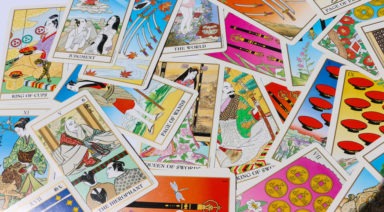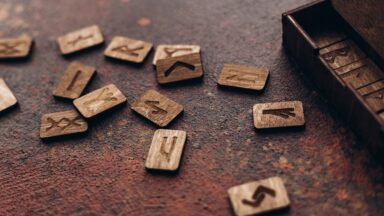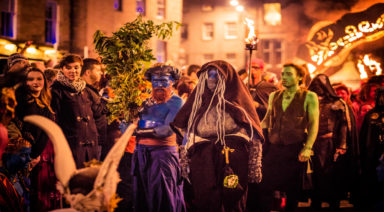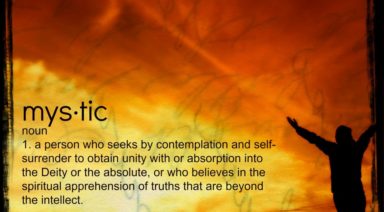Can Ordinary Playing Cards Reveal Our Purpose and Destiny?

In 1893, a peaceable druggist living in Grand Rapids, Michigan came out of the metaphysical closet. For decades, Olney H. Richmond had quietly studied esoteric practices from the ancient Chaldean and Egyptian mystery schools. He pursued “ear-whispered” knowledge; unwritten and passed from teacher to student by direct instruction. As the “Grand Mage” of the Ancient Order of the Magi, he authored the order’s premise; “we are students of a scientific religion that accepts nothing as fact until proven.”
After publishing the results of his work in his treatise “The Mystic Test Book,” Richmond became a reluctant object of curiosity. In an interview with the local Grand Rapids Daily Democrat, he described a system based on the laws of “astral magnetism” related to the symbols on ordinary playing cards.
Richmond explained that an individual’s entire life path, or “destiny,” could be revealed by examining the card associated with their birth date, as well as a “life spread” of additional cards. He said that this method, based on mathematical laws and methods from “Egyptian, Chaldaic, and Arabian Magi” was a combination of science and magic. The card system also incorporated astrology, astronomy, and numerology; Richmond believed the system originated in Atlantis and Lemuria.
Called the “Cards of Destiny,” this system was not a method of divination in the tarot card genre; each of the 52 cards had an associated, predetermined life spread indicating periods of prosperity and austerity, growth and stasis, and one’s location on the ferris wheel of fortune.

Chart courtesy of The Cards of Life.
Richmond also referred to the system as “The Book of Seven Thunders,” referencing the then known seven planets of the solar system. The “book” was the 52-card deck. Since then, the system has also been called “The Cards of Destiny,” and “The Book of Life.”
The Cards of Destiny had a quiet following for several decades, but was reintroduced by Florence Campbell and Edith Randall in 1947 with a privately published, spiral-bound text titled “Sacred Symbols of the Ancients.” Based on Richmond’s work, the text became the defining classic for the Cards of Destiny system now popularized by Robert Lee Camp’s publishing company, books, software, and website, 7thunders.com, and Gina Jones’ books and The Cards of Life website; both offer resources for birth card meanings, life scripts, etc.
Card Symbolism
The two colors of the suits represent masculine, yang (red) and feminine, yin (black). The kings, queens, and jacks, totalling 12, represent the 12 months. Thirteen cards in each suit correspond to the 12 signs of the zodiac plus the “sun behind the sun,” a reference to the creator or source. The 52 cards correspond to 52 weeks in a year.
According to Sacred Symbols of the Ancients, the deck’s “special” numbers are seven and nine. Seven is considered the “center” of each suit, and corresponds to the “original seven planets known to the ancients.” Seven also represents the sacred number of the soul of man.
Nine is the last single digit number, and is considered the universal number representing the complete cycle of human experience.
The Joker, associated with the Dec. 31 birthday, is in a class of its own. Corresponding to the fool card in the tarot, the Joker has all the characteristics of the other cards, and paradoxically none of them. According to Sacred Symbols of the Ancients:
“The initiate/teachers of old deliberately concealed much of their wisdom from the ‘profane’ by words or pictures which conveyed opposite, or distorted meanings to all but the serious students who, by meditation and visual impression, could see behind the veil and discover the truth.
“The fool of the tarot is the pictorial statement of the One Force, the NO THING (0) yet everything to all men — eternal energy, boundless, measureless and infinite. It is all seasons, all forms, and all activities.”
The Four Suits
Like tarot, the standard card deck is made up of four suits representing the four elements; earth, air, fire, and water. The suit and ranking of each card is indicated by “pips,” or symbols printed on a card. These are cursory definitions; much more detail is available online, or in texts listed in the resource section below.
Hearts
Associated with the Fire element, the Hearts relate to love, emotions, children and childhood, and springtime. Hearts are ruled by Venus and Neptune.
Clubs
The Clubs represent the Air element, and correspond to the intellect, education, curiosity, intuition, and the written word, i.e. literature. The related season is summer. Clubs are ruled by Mercury and Mars.
Diamonds
Corresponding to Water, Diamonds have to do with values, livelihood, security, responsibility, and entertainment. The Diamond season is autumn. Diamonds are ruled by Jupiter.
Spades
Related to winter, Spades rule old age, wisdom, health, and transformation. Their element is earth. Spades are ruled by Saturn and Uranus.
Numbers
Below are numerical meanings in the broadest terms. For more information, see the resources section at the end of this article. All are taken from Randall and Campbell’s “Sacred Symbols of the Ancients.”
One, or Ace: Individualization, leadership, progress; can also indicate selfishness, dictatorship, and disregard for the needs of other.
Two: Cooperation, diplomacy; also indifference or dishonesty.
Three: Happiness, optimism and sociability; also jealousy, worry, or intolerance.
Four: Organization, self-discipline and service; also carelessness, restriction, or destruction.
Five: Adaptability, versatility, and change; also aloofness, superficiality, and restlessness.
Six: Responsibility, love, and harmony; also meddling, criticism, and anxiety.
Seven: Spirituality, mental agility, peace, and silence; also melancholy, cynicism, and coldness.
Eight: Power, material freedom, and philanthropy; also materialism, manipulation, and bullying.
Nine: Humanitarianism and universal love; also selfishness, emotionality, and wastefulness.
Ten: Universal ideals and progress and the divine spark within all; also exploitation, ambition, and self-promotion.
Jacks, queens and kings, also known as the court cards, also have general meanings.
Jacks: Inspiration and ideas; also laziness and immaturity.
Queens: Power and receptivity; also selfishness or martyrdom.
Kings: Principles and values; also fixation.
The system is far more complex than the scope of this article; below are resources for those who wish to learn more about the Cards of Life.
Resources:
Face Value: Understanding the Evolution of Numbers in Playing Cards by Gina E. Jones
The Power of Playing Cards by Saffi Crawford and Geraldine Sullivan
Destiny Card Calculator click here.
Life Card Interpretations here.
Karmic Numbers: What Your Birthday Reveals About Past Lives

The day you were born says a lot about who you are and where you’re going in this life. In numerology, your birthday can also reveal insights into your past life by date of birth and the lessons you still carry forward. Pythagoras believed that every number carries energy, and the combined vibrations of the numbers in your life shape who you were, are, and will become.
The numbers in your birth date reveal hidden clues to lessons missed in past lives. In numerology, it is believed that our souls are core, but our bodies reincarnate many times in order to further evolve. With each life, new experiences bring growth, but mistakes and past actions also leave behind imbalances.
Along the way, we make mistakes and abuse our natural gifts. Using your birth date, we’re able to identify whether your numerology chart contains one of four important Karmic Numbers. The numbers 13, 14, 16, and 19 are Karmic Debt Numbers, which indicate areas of your past lives that may still need attention. Understanding these past mistakes allows you to balance and heal the karma in your present life.
How to Calculate Your Karma Numbers
There are four Karmic Debt Numbers: 13, 14, 16, and 19. Each one highlights a specific life lesson connected to past actions. To find your Karmic Number, look at three key areas in your numerology chart:
Past Life by Day of Birth
If you were born on the 13th, 14th, 16th, or 19th, then this is your karmic number. This suggests your birthday carries imbalances from previous lives that may still influence you today.
Being born on a karmic date suggests you entered this lifetime with specific challenges to work through. Each number carries a slightly different meaning:
- 13/4 – linked to discipline and responsibility, this number asks you to overcome procrastination or lack of focus.
- 14/5 – tied to freedom and balance, it challenges you to avoid overindulgence or misuse of personal power.
- 16/7 – connected to relationships and humility, this number teaches acceptance and warns against arrogance or over-dependence.
- 19/1 – about independence and personal strength, it highlights the need to overcome selfishness or misuse of authority.
Personality Number
Your personality number signifies the energy that you project to the outside world, as well as how others are most likely to interpret it. This is not your true self, but an indicator of what you allow to be seen at the beginning of a relationship. There are multiple ways to find your personality number; however, we choose to focus on adding your day of birth to your birth month. For example:
To calculate this number, add your day of birth to your birth month. For example:
- Birthday: May 5
- Calculation: 5+5=10=1+0=1
If your personality number is found by one of the following ways, then this is your Karmic Debt Number:
- 4 (13=1+3=4)
- 5 (14=1+4=5)
- 7 (16=1+6=7)
- 1 (19=1+9=10=1+0=1)
Life Path Number
Your life path number represents your true self and direction in life. It is one of the most important core numbers in numerology. To calculate it, add all the digits of your full birthday together until you reach a single digit or one of the master numbers (11, 22, 33).
Example: If your birthday is April 4, 1955, then:
- Day: 4
- Month: April is the fourth month = 4
- Year: 1955 = 1+9+5+5 = 20 = 2+0 = 2
Therefore:
- 4+4+2 = 10 = 1+0 = 1
The Life Path Number here is 1. If your Life Path reduces to a double-digit number that matches 13, 14, 16, or 19 before being broken down to a single-digit number, you have a karmic debt. For example, 16/7 shows the number 16 first, then reduces to 7.
Karmic debt numbers can also appear in other core numbers within a numerology chart, but the Day of Birth, Personality Number, and Life Path Number are the most common places to find them.




































